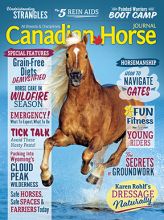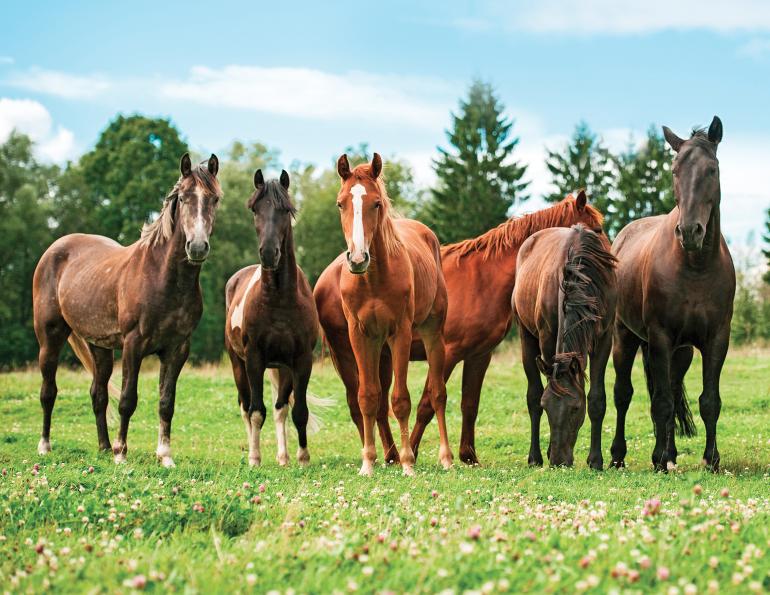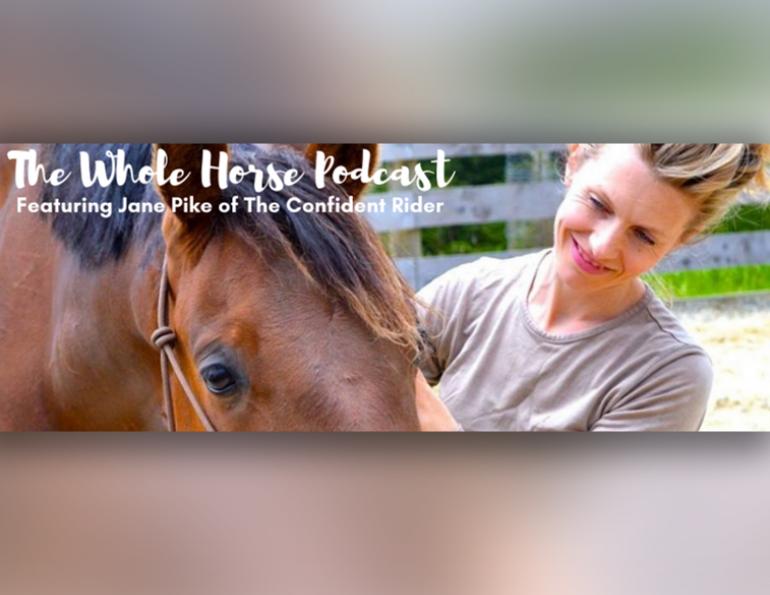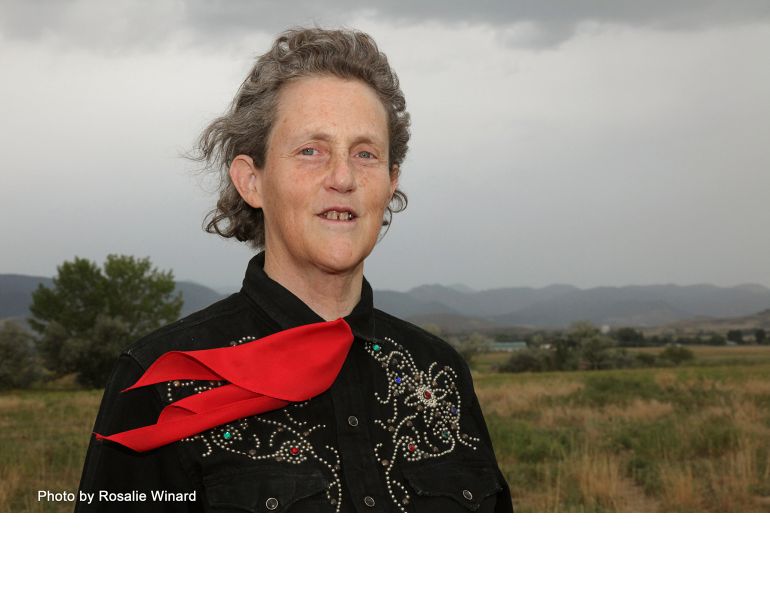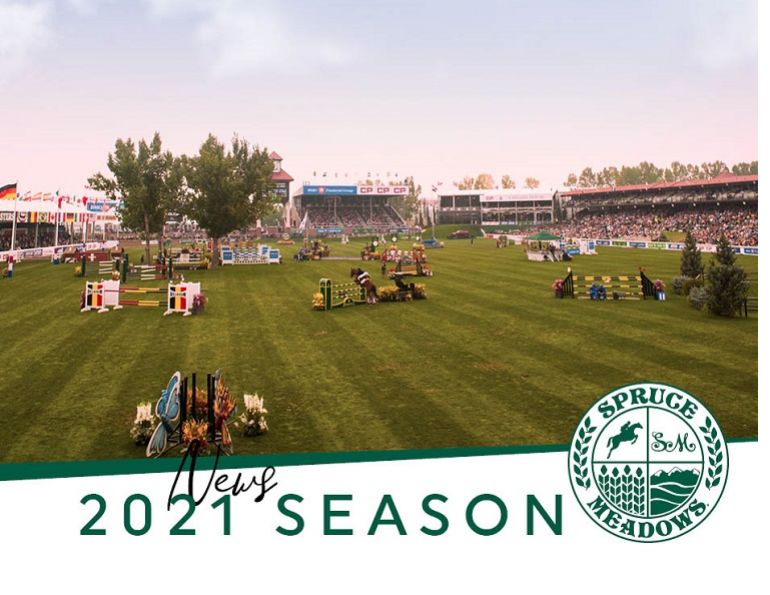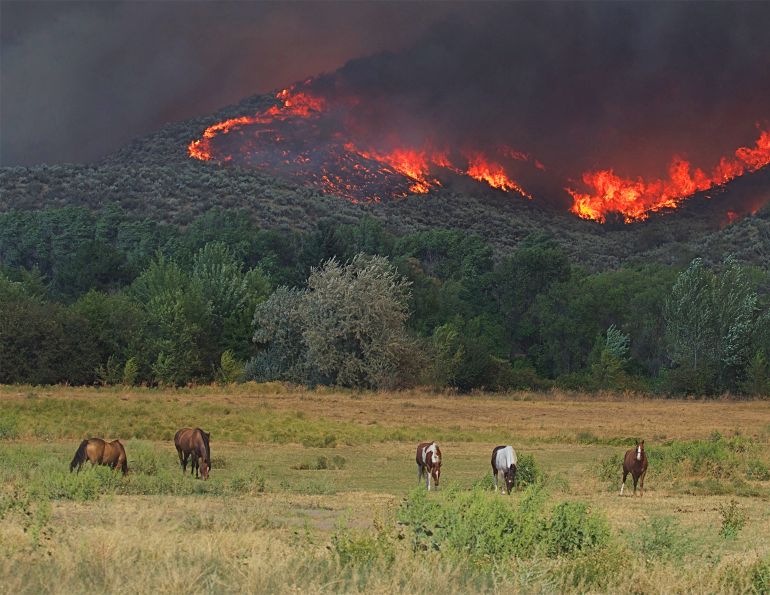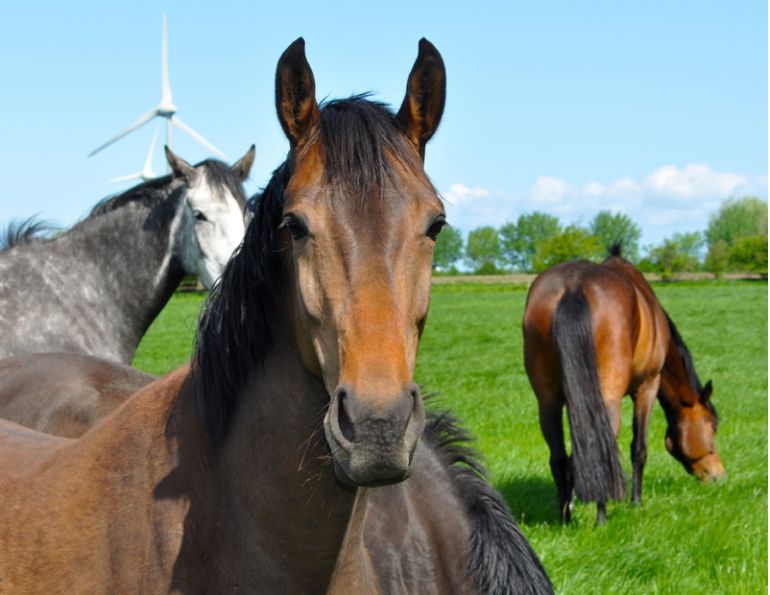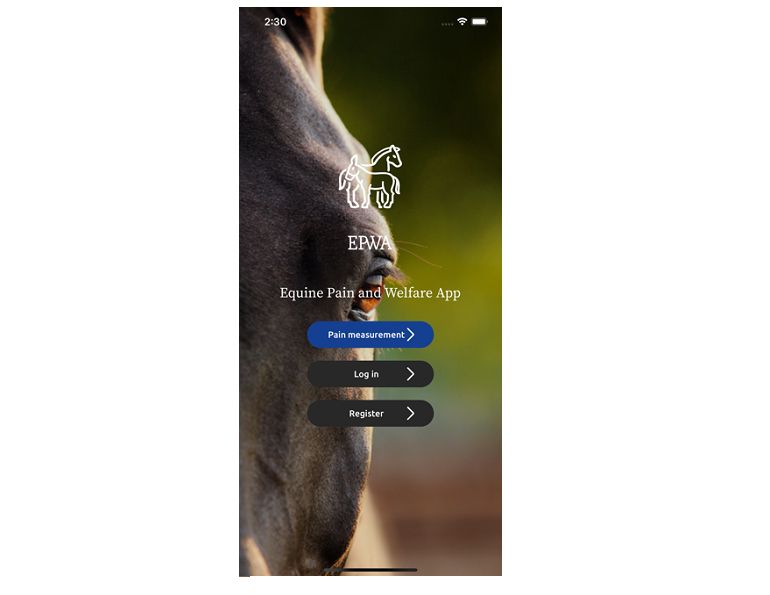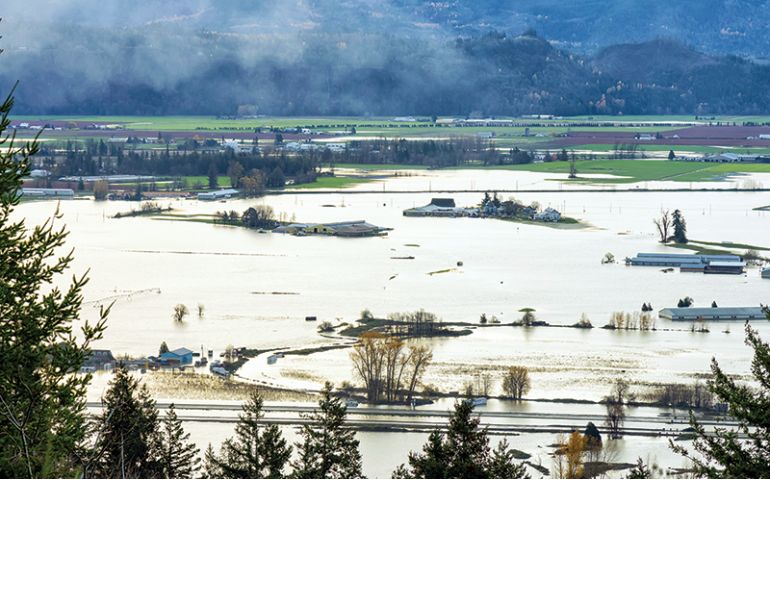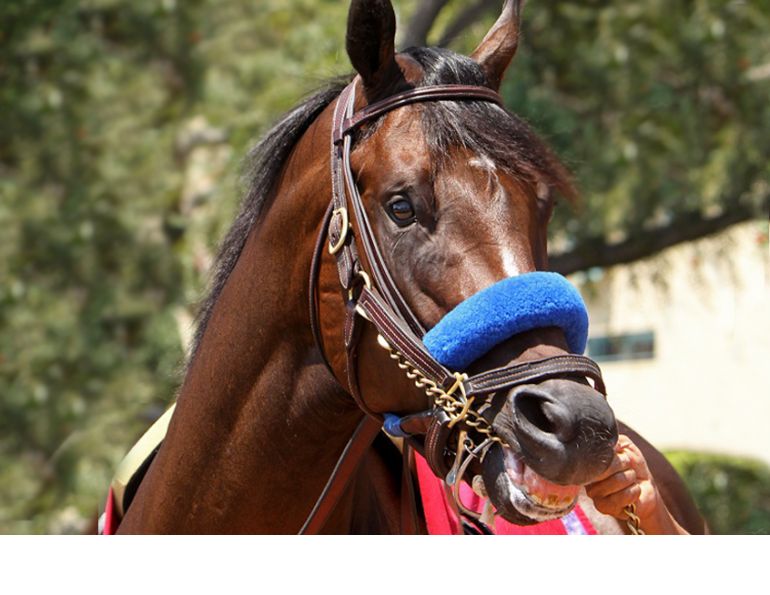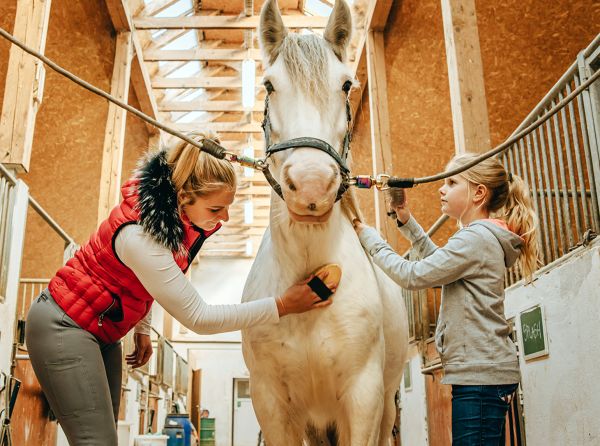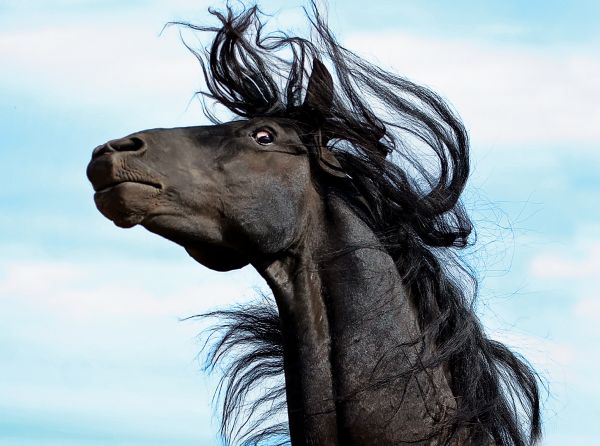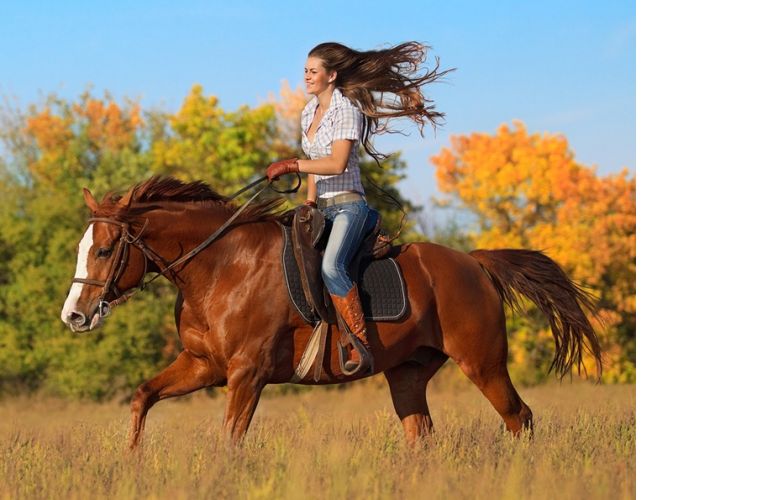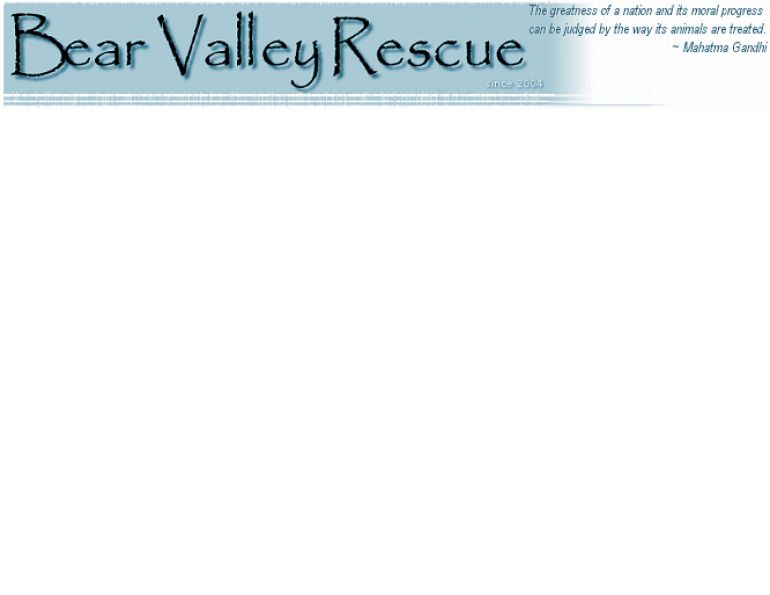Resilience: Rethinking, Restructuring, Reevaluating due to COVID-19
By Tania Millen
Every year since 2016, University of Guelph equine faculty and students have organized the Equine Industry Symposium to bring together experts and horse enthusiasts from Canada’s equine community and discuss horse industry issues. In 2020, there was only one topic on everyone’s mind: how Canada’s equine industry would make it through the coronavirus (COVID-19) pandemic and what the industry would look like in its aftermath.
When the World Health Organization officially declared COVID-19 a global pandemic in March 2020, the impact quickly spread across the country and around the world. The horse industry was caught off guard. Many horse owners found themselves without access to their horses, as barns were restricted to only those directly involved in horse care. Students were unable to attend lessons; facilities became financially stressed; and businesses struggled to survive. To that end, the 2020 Equine Industry Symposium was titled RESILIENCE: Rethinking, Restructuring, Reevaluating Due to COVID-19 and was designed to facilitate dialogue about how to overcome the pandemic’s challenges and move forward. It was jointly hosted by University of Guelph students in the Bachelor of Bio-Resource Management program, Ontario Equestrian (OE), and Equestrian Canada (EC).
Unlike previous events, which participants attended in person, the 2020 symposium consisted of free online webinars over five evenings. Live and pre-recorded speakers discussed the effects of the pandemic in their areas of expertise, and made recommendations on how to move forward. Topics included the economic, horse welfare, and social impacts of COVID-19 on Canada’s horse industry; strategies to help businesses prepare for an uncertain future; horse welfare; managing and tracing Canada’s horse herd; and preparing for the future.
The presenters donated their time, and symposium organizers made a $50 donation on behalf of each presenter to For the Herd, an emergency fundraiser administered by OE to assist riding schools struggling to provide for their horses during the pandemic.
The symposium was attended virtually by almost 300 people from eight countries. In lieu of an attendance fee, participants were encouraged to make a donation to For the Herd, plus complete an online survey of how the pandemic had affected them. Attendees could also submit questions for symposium presenters to answer.
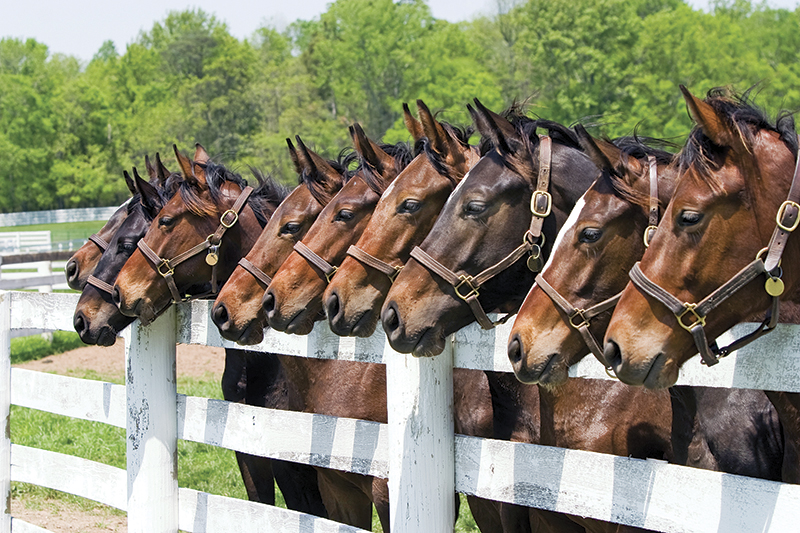
At the start of the pandemic, the most recent data on the size of the Canadian horse herd was from 2016 when 291,561 horses were counted by the Canadian Census of Agriculture, but the actual estimate is up to four times that number. Photo: iStock/Iillisphotography
Opening remarks at the 2020 Symposium were delivered by Akaash Maharaj, former CEO of Equestrian Canada and current CEO of the Mosaic Institute.
“The Equine Industry Symposium is one of the few events with the standing to call us all together, and the capacity to help us achieve together what none of us can achieve alone,” stated Maharaj, who continued by conveying hope: “We will see off coronavirus… because through our relationship with our horses, we understand the nature of partnership: the imperative to work together; to learn from one another; to extend compassion to each other; to protect both our individual and shared dignity; to draw strength from adversity; to struggle forward in a world that does not always understand us; and to occasionally succeed despite ourselves.”
Following Maharaj’s inspiring remarks, the first evening of the symposium began.
Day 1: Impacts of COVID-19 on Canada’s Horse Industry
In March 2020, when many areas of Canada went into lockdown, EC hired Wilton Consulting Group to determine the immediate effects of COVID-19 on the equine industry so that industry representatives could lobby governments for assistance. Bronwynne Wilton was the lead researcher for the study and the first presenter at the symposium.
Wilton reported that one of her first tasks was to determine how many horses there were in Canada. The most recent data was from 2016 when the Canadian Census of Agriculture counted 291,561 horses, but horse numbers are chronically under-estimated; there may be four times that many.
“This raises an interesting issue in terms of not knowing exactly how big the Canadian equine herd is, what they do for a living, how they’re used, and how they live across the country. It’s a very important issue that we need to get a handle on,” said Wilton. She explained that horses are defined in different ways by different government agencies and are included in a variety of governing regulations.
“How horses are defined impacts… which government department to go to for support,” she notes. For example, it’s unclear whether a horse is a farm animal, an athlete, or an employee. “We decided it was time for a new definition [of horses].”
Subsequently, the idea of active equines was created in conjunction with EC and government agencies. These are horses that:
- Are raised or cared for in an active equine facility;
- Make direct economic contributions to revenue-generating activities;
- May be used for pedigree development, sport/competition, youth/adult development and wellness, physical exercise, therapeutic use, or agri-tourism.
Active equine facilities were defined as:
- Commercial agricultural businesses using farmland, purpose-built structures, and active equines to generate revenue;
- Offer a mix of services including breeding, raising, training, boarding, and maintaining health and welfare of active equines.
(Note that active equines and active equine facilities do not include operations or animals used in the food processing or pharmaceutical industries.)
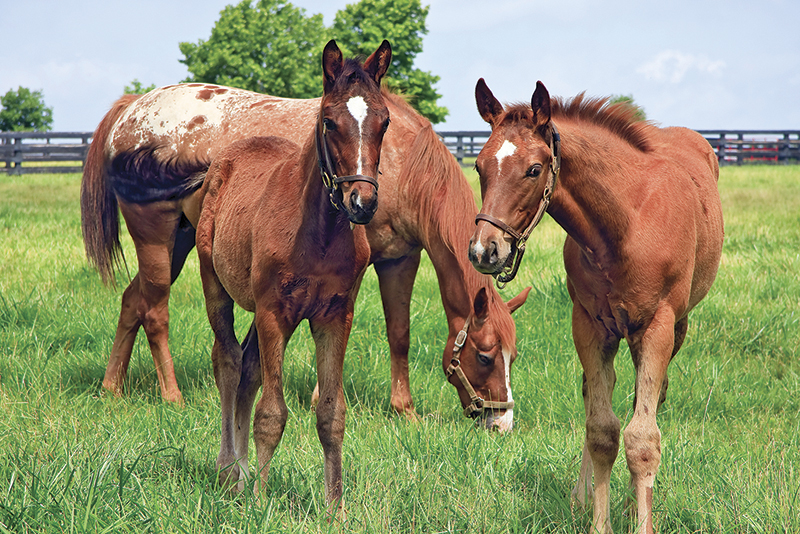
An active equine facility is defined as one offering a mix of services, including boarding, breeding, raising, and training horses. Photo: iStock/Jill Lang
Wilton also surveyed the Canadian horse industry and found that over half of survey respondents had one month’s worth or less of reserve finances and supplies, while only 19 percent of respondents were eligible for short-term income assistance. Additionally, an estimated 145,695 active equines were identified in Canada, and approximately 46,501 horses in 8,455 facilities were facing extreme financial pressure.
With these results in hand, the following recommendations were made:
- That active equines are recognized as part of Canada’s agricultural system by federal and provincial ministries of agriculture;
- That EC and Provincial/Territorial Sport Organizations (PTSOs) adopt these definitions; and
- That equine organizations work together to lobby government, to collect more data on Canada’s equine sector, and continue to promote active equines within the agricultural sector.
Wilton’s full report titled Response to COVID-19 for Canada’s Active Equines: Summary Report is available on EC’s website, horse industry section.
Related: $3 Million COVID-Relief for Ontario Equines
The next presenter, Danielle Glanc, is a Farm Policy Analyst with the Ontario Federation of Agriculture whose portfolio includes anything equine related. She summarized how the equine sector in Ontario had been affected by COVID-19 from an agricultural viewpoint.
“The equine sector in Ontario is very diverse. It directly creates and supports a myriad of jobs… which make significant contributions to the local, provincial, and national agricultural sector and rural economies.”
However, Glanc noted that at the beginning of the pandemic, equine services were considered non-essential and equine facilities were shut down, while agricultural services were considered essential and allowed to continue. This disconnect was a result of most horse operations being excluded from the definition of a farm business.

The survey of horse owners conducted early in the pandemic revealed that over half of respondents had one month’s worth or less of reserve finances and supplies, and only 19 percent were eligible for short-term income assistance. Photo: Canstock/Goce
“While horses are considered livestock, they are not necessarily considered ‘farming’ in the legal sense,” she explained. There are also six Ontario ministries that regulate horses, which “makes it very hard to get answers.” So, during the pandemic, “Because many horse operations aren’t considered farms, they had little access to resources to help their affected businesses.”
Glanc also noted that during discussions with government officials, proponents were asked for data about the equine industry and how it was being affected by the pandemic.
“Unfortunately, data for the equine industry is hard to come by,” she explained. Therefore, her recommendations going forward are to:
- Continue lobbying for acceptance of the definitions of active equine and active equine facility;
- Lobby agricultural organizations to accept horses as part of agriculture;
- Educate on the contributions of horses to the agricultural landscape;
- Collect data on the equine industry; and
- Integrate horses into rural development strategies.
Next, Christine Reupke, Director of Equestrian & Breed Sport at The Royal Agricultural Winter Fair (The Royal) shared a summary of the effect of COVID-19 on equine competitions.
In the spring of 2020, all EC competitions and sanctioning of future competitions ceased. This immediately concerned organizers of The Royal, which is a massive country fair-type of event held every November in Toronto. Not only is the event a logistical challenge, but equestrian competitors from across Canada train all year to contest championship events at the fair. Accordingly, determining the latest date when the fair could be cancelled was important, as was communication with key stakeholders.
The Royal was ultimately cancelled in mid-June and a tiered communication plan was utilized to advise stakeholders — from competitors to sponsors, volunteers to media — of the cancellation. Organizers immediately pivoted to researching the possibility of holding a virtual event. In describing how directors of The Royal decided to cancel the live event and hold a virtual fair instead, Reupke noted, “This taught us invaluable lessons in planning, forward-thinking, embracing technology, and adapting, on a pretty severe learning curve.”
Deciding whether to host a virtual event involved weighing the risks and rewards, plus determining how to maintain the feel of the fair that supporters expected. Hosting a virtual event was a terrific opportunity to expand The Royal’s audience and produce a global event, and after extensive planning, a Virtual Royal was held in November.
“COVID has been very detrimental and a lot of horse shows suffered,” said Reupke. “Nobody has gone untouched. The first lockdown exposed weaknesses in business plans and daily operations of equestrian businesses, events, and competitions.”
Athletes suffered, too, with some riders missing the last year that they were eligible for equitation or pony classes, while Olympic-calibre athletes had their competition delayed for a year.
However, Reupke commented that COVID-19 showed the horse community how to work together. Restrictions provided more training time for athletes and their horses, and people found other ways to enjoy their horses. Ultimately, Reupke said that the equestrian world needs to continue to pivot and adapt, and she encouraged equestrian businesses to look for innovative ways to create opportunities.
Related: Applications Reopened for Alberta Equine Partners for the Herd
The final speaker on the first evening of the symposium was Jonathan Zammit, the Executive Director of Ontario Racing. He summarized how the pandemic affected the Thoroughbred, Standardbred, and Quarter Horse racing industries in Ontario in 2020.

When the pandemic shut down horse racing in Ontario, a successful lobby effort saw funding made available to Thoroughbred, Standardbred, and Quarter Horse owners, and by the end of May 2020, over $11 million had been distributed. Photo: Shutterstock/GeptaYs
When non-essential services were shut down in March 2020, four Standardbred racetracks were immediately closed, and 864 horses that were ready to race didn’t have anywhere to run. In the month of March alone, approximately 2,200 horses along with their trainers, owners, jockeys, and grooms were at the tracks, being prepared to race. “It was a pretty substantial impact to the industry, when all of a sudden your ability to earn any type of income is cut short,” said Zammit. Discussions ensued, and “Since there was no racing, why not reinvest the funds back into the industry in some form of support?” he remarked.
Eventually, 864 Standardbred horses were each eligible for $300 from unallocated purse money to help ease the burden of not being able to race. Additionally, the 1,652 Standardbred horses in Ontario that were eligible to race in the following weeks also received a $300 benefit. “It’s not much,” said Zammit, “but was the best we could do at the time with the funds we had at our disposal.”
As the pandemic continued, Thoroughbred racing in April was cancelled, and additional funding support was needed for horses and their connections. So, a task force was created to determine how best to address the situation and lobby the government to reallocate undistributed purse funds to the horses. “We needed to maintain the welfare of these horses… to ensure that their well-being and their fitness levels were maintained in the event that we got back to live racing,” said Zammit.
The lobby effort was successful and owners could apply for funding for Thoroughbreds ($1,500 per horse), Standardbreds ($1,000 per horse), and Quarter Horses ($750 per horse) that trained and raced in Ontario. By the end of May 2020, over $11 million had been distributed to 4,844 horses. “I think we can take a step back and really feel good about how we helped the industry,” said Zammit. “The pandemic has really refocused our thinking on innovation… and never taking our eye off our highest priority, which is equine health and welfare.”
When racing resumed on June 5, 2020, over 120 live racing days had been cancelled and about $100 million in wagers had been lost.
These four presentations provided a general overview of how the pandemic affected Canada’s horse industry in 2020, and set the stage for ideas on how to prepare for the future.
Day 2: Preparing for an Uncertain Future
The second evening of the symposium focussed on preparing for the future. The first speaker was Dr. Melanie Barham, an FEI veterinarian and project management professional, who discussed business planning and how creating a business plan can help move organizations forward.
Barnham explained that business plans describe the big picture — what you do, how you do it, and your strategies for the future. “There is really good evidence that being able to write them [your plans] down is really important to making goals happen,” she said. “Legitimate businesses have business plans.”
Barnham explained that business plans help owners say “no” to things that aren’t a good fit for their business and “yes” to good opportunities.
Two types of plans were presented:
- The lean business canvas, which is a one-page document summarizing the value proposition, clients, and how the business operates; and
- The formal business plan, which is a more complex document that a bank would require.
Barnham suggested starting with a lean business canvas, then completing the more extensive formal plan.
Branham then described how every business has a unique selling feature that makes clients choose one business over another, and that’s called the value proposition. Essentially, the value proposition summarizes who the business serves and what problem it solves, and when that’s clear to the business owner, it’s much easier to think up different ways to make money.
Related: COVID-19 Pandemic Sidelines the Horse Industry
“Make sure you are investing time to think about your big picture goals and how you can serve your customers better,” concluded Barnham, explaining that this will help recession-proof the business and allow owners to pivot and change activities in challenging times. She also noted that business planning resources can be found at local innovation centres, small business associations, and colleges and universities, and that many funding programs are available.
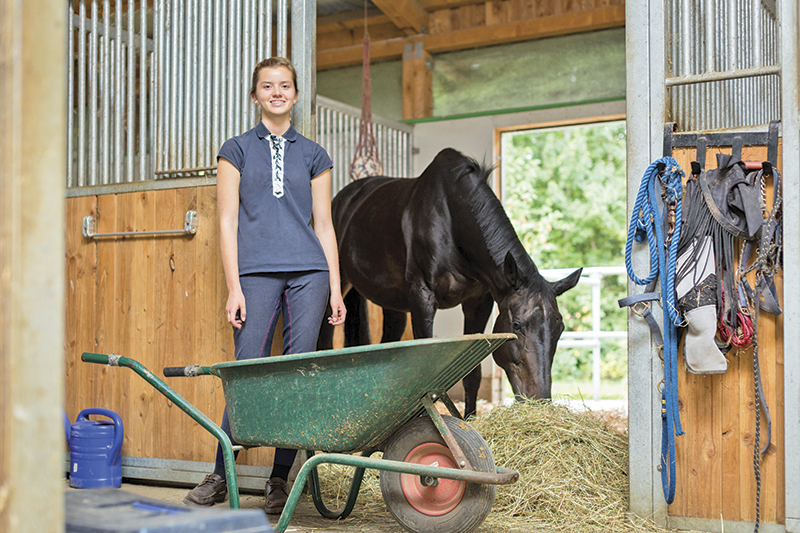
Equine facilities can gain an advantage over competitors and set their operation apart by incorporating both the mandatory requirements and the recommendations of The Code of Practice for the Care and Handling of Equines into their business practices. Photo: iStock/Nullplus
The next presenter was Sean Jones from Sun Life Financial, who provided an action list for designing a recession-proof financial plan. There aren’t a lot of safety nets for equine industry businesses, he explained, so it’s important to have a financial plan in place. He also said that equine entrepreneurs typically undervalue themselves and don’t charge enough for their services. Although equestrians often grow businesses out of their passion for horses, they need to look at their business from a profitability standpoint. Only three out of ten businesses survive for ten years, so profitability has to be the primary driver for businesses.
“Understanding basic financial fundamentals is going to secure your financial base of support,” he explained.
Jones provided five questions to determine whether an equine facility business will survive the next crisis:
- Does the business have revenue streams in addition to income from teaching riding lessons?
- If the business owns horses, are all horses generating twice their expenses?
- Have unnecessary expenses been eliminated?
- Is there an aspect of the business that can be monetized virtually?
- Is there enough cash in an emergency fund to cover three to six months of expenses without any revenue?
Jones also presented five ways to improve financials:
- Pay yourself first: 15 percent of the profits.
- Pay off all debt except a mortgage.
- Get the business operating on a minimum 25 percent margin.
- Allocate ten percent of business profits for future growth.
- Consult an accountant about incorporation (benefits include lower income tax rates and limited liability).
“Small steps lead to big changes,” said Jones. “Make realistic and attainable goals and seek out advisors to help you.”
The next presenters were Catherine Willson, an equine lawyer, and Mike King, a partner at CapriCMW Insurance Services Ltd. who discussed risk mitigation and the insurance implications of COVID-19. Willson and King addressed a wide range of questions submitted by participants before and during the symposium, and then provided a brief presentation.
Willson advised that stable owners, shows, or clinicians can be sued by someone who alleges that they contracted COVID-19 at the owner’s stable, show, or clinic, but it may be difficult for that allegation to be proven in court. As a result, businesses need to do everything reasonable and practicable to prevent the contraction of COVID-19 by anyone in those situations. To defend themselves successfully in court, hosts should keep records that confirm their preventative actions for at least two years.
Additionally, King advised that insurance providers will not insure against the possibility of clients contracting communicable diseases such as COVID-19. They further advised that the legislation for businesses regarding COVID-19 is changing all the time, so it’s worth staying on top of the changes, speaking with your PTSO, and discussing options with your insurer.
Willson and King subsequently provided examples of ways that equine business owners could mitigate the risks of COVID-19. These include:
- Creating a risk management strategy, plus requesting guidance from the municipality and health authorities;
- Using acknowledgement of risk (waiver) forms, which are modified to include communicable diseases;
- Having conversations with clients;
- Using signage to warn visitors of the risks of being on the property;
- Asking questions, such as whether a client or visitor has travelled or been ill; and,
- Having all visitors and employees sign in every day and keeping the information on file in case someone contracts COVID-19 and others need to be advised of potential exposure.
Willson and King advised that employers have a duty to keep workers and workplaces safe, and staff have the right to refuse work if they feel unsafe. Therefore, employers should enroll their workers in Worker’s Compensation Board (WCB) or Workplace Safety and Insurance Board (WSIB) benefit programs, and not hire contract workers. These programs protect the employer and employee in the event that a worker becomes injured.
Willson and King also addressed how to keep clients engaged when they can’t visit their horses. They suggested that barn owners use boarding agreements, so that protocols are in place regarding what the stable will provide in terms of accessibility and services in the event of a shutdown. They also suggested that maintaining communication is important, along with sharing — perhaps via photos or video — what the barn is doing for their clients’ horses during a shutdown.
When asked what the future of the horse industry looks like, Willson and King responded that there is no going back to the way it was, so business owners need to be nimble, proactive, and forward-thinking. They suggested that everyone in Canada’s horse industry needs to be an activist and advocate for the industry.
Day 3: Horse Welfare
Horse welfare in Canada and end-of-life options for horses were addressed during the third symposium evening.
In the first presentation, Gayle Ecker, Director of Equine Guelph, discussed Canada’s new Code of Practice for the Care and Handling of Equines, produced by the National Farm Animal Care Council (NFACC).
The history of animal welfare dates back to the 1800s, but it wasn’t until 1979 that the five freedoms of animal welfare were recognized internationally. These include:
- freedom from hunger and thirst — by ready access to fresh water and a diet to maintain full health and vigour;
- freedom from discomfort — by providing an appropriate environment including shelter and a comfortable resting area;
- freedom from pain, injury and disease — by prevention or rapid diagnosis and treatment;
- freedom to express normal behaviour — by providing sufficient space, proper facilities and company of the animal’s own kind; and
- freedom from fear and distress — by ensuring conditions and treatment which avoid mental suffering.
Canada’s First Code of Practice for Horses came out in 1998 and the 2013 Code of Practice for the Care and Handling of Equines builds on it. The 2013 Code is based on scientific evidence and consensus, and was developed by the NFACC and EC. It includes requirements, which are fundamental obligations relating to the care of animals, and recommended practices to promote education and improvement in animal welfare outcomes. The Code outlines responsibilities in many areas including care, housing and facilities, feed and water, health management, feedlot management, husbandry practices, reproductive management, transportation, change or end of career, and euthanasia. Sections of the Code are colour-coded to illustrate minimum standards (requirements) and best practices.
One of the highlights of the Code is the illustrated section on body condition scoring, which can be used to determine the condition of the horse.
“I really encourage all horse owners to learn how to properly conduct a body condition score,” said Ecker. “It can prevent problems before they become serious.”
Behavioural considerations are also part of the new Code, and these include understanding that horses are a prey species, and that training and handling must be based on learning theory. “That’s a big change,” added Ecker.
Ecker also notes that while many people think that horses in good health have good welfare, that is not necessarily the case. She explains that good welfare is more than just the absence of disease and absence of pain. Good welfare includes a quality of life where horses thrive, and not just survive.
Ecker said that smart business owners can use the Code to differentiate their business from others. For example, if a boarding facility embraces both the mandatory requirements of the Code and the best practices and recommendations that help horses thrive, that can be a selling feature and an advantage over other businesses.
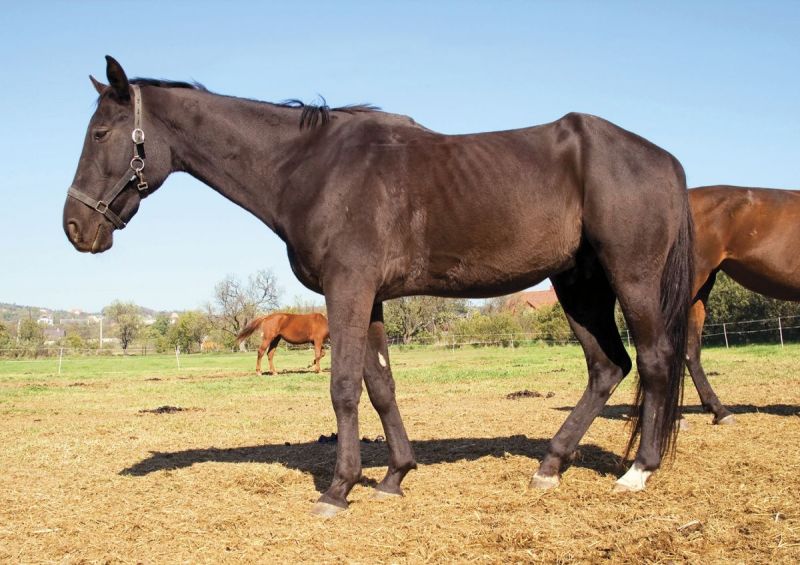
Good welfare includes a quality of life where horses thrive, rather than simply survive. Photo: Canstock/Levifoto
“If you can prominently show that you support the Code of Practice, this brings confidence to your customers, and also helps support our social licence to operate when we are using horses for business,” she concluded, suggesting that all horse owners, riders, and business owners either read through the Code or take a short course to familiarize themselves with it.
Find additional information on The Code of Practice for the Care and Handling of Equines HERE.
In the next presentation, Dr. Roly Owers, the Chief Executive Officer of World Horse Welfare, summarized how to maintain horse welfare during COVID-19 restrictions.
World Horse Welfare (WHW) was created in 1927 and continues to support the horse-human partnership across four continents. The organization has strong veterinary credentials, is active in policy discussions, and advises regulators on sport horse welfare.
“A key focus [of the organization] today is around the responsible ownership and recreational use of equines,” said Owers. “There are about 110 million working equines in the world today, which support the livelihoods of about three-quarters of a billion people, so they have a very important role to play literally as horse power.” WHW attempts to support these and all other horses through care, research, education, and influencing.
The actual definition of welfare includes physical and mental health, as well as happiness, so Owers said, “What we need to focus on is not just providing our horses with a life worth living, but giving them a good life.” As such, the current understanding of horse welfare recognizes that horses are sentient beings, and that mental well-being is at least as important as physical welfare.
A simple way of viewing welfare requirements for horses is to recognize the three “Fs” — forage, freedom, and friends. To that end, Owers said, “Clearly it is vital that we have to meet the needs of our horses during any restrictions.” During the pandemic, WHW recommended making changes slowly, continuing necessary vet and farrier care, and providing some form of exercise.
Moving forward, Owers suggested creating a care plan for each horse that outlines their daily routine, feed, veterinary contact details, and the steps to take in an emergency. He also suggested that there are ways to cut costs but not care: by moving to less expensive boarding situations, leaving horses unshod, sharing horses with others, and working together. In summary, Owers stressed that quality of life is the determinant of good horse welfare, and responsible ownership includes maintaining quality over quantity of life whereby euthanasia may be the kindest option.
This conclusion segued nicely into the presentation on equine end-of-life planning by Dr. Bettina Bobsien, a Canadian veterinarian.
Bobsien stated that Canadian legislation requires that welfare must be of paramount importance when owners are making change- or end-of-career decisions for horses such as retirement, rehoming, euthanasia, or slaughter.
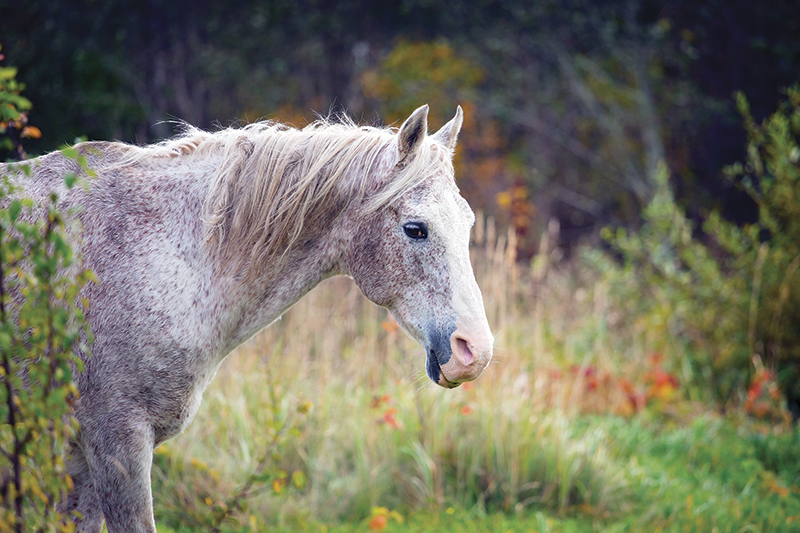
Many horse owners think retiring their horse is an ideal option, but not every horse owner is financially equipped to properly care for the horse through many years of retirement. Photo: Shutterstock/Vera Reva
Most horse owners think that retiring horses is ideal; however, horses can live well into their 30s and depending on the activity that they retire from, may be retired for more than half their life. Thus, the costs, time requirements, and medical management of a retired horse must be considered. The basic cost to care for one retired horse in British Columbia is about $630 per month. So, it will cost about $7,500 to keep one retired horse for one year, and over $75,000 for that same horse for ten years. Aging horses also may need special diets, veterinary care, and medications, increasing costs and management needs.
What about rehoming? “There is no bad welfare with timely euthanasia, but there is terrible welfare with people pawning off their old, unwanted horses onto unsuspecting horse lovers,” said Bobsien. She provided several reasons why rehoming could be a poor choice including the potential for substandard care, lack of veterinary and farrier care, poor welfare, and biosecurity concerns.
Bobsien then discussed euthanasia, saying that ethics, cost of ongoing care, quality of life, and any contractual obligations must be considered.
As for the slaughter option, Bobsien stated that there are very strong advocates against horse slaughter in North America but in 2016, 54,100 horsed were destined for slaughter. The primary concerns regarding horse slaughter as an end-of-life or end-of-career choice surround the auction, transportation, handling, feedlot, and slaughter practices.
Bobsien concluded her presentation and the third evening of the symposium by saying that horses live far beyond their careers, and while retirement may be ideal, not every owner has the resources to retire their horse. Regardless, it’s the owners’ responsibility to make good welfare choices for their horse, and that may include deciding that euthanasia is the best option.
Day 4: Tracing Canada’s Horses
The fourth evening of the symposium was dedicated to discussing current methods of tracking horses and why traceability is paramount in a pandemic or other emergency situations.
The first speaker was Stewart Everett, the founder and CEO of UK Equine Register, who summarized the traceability product the company developed to register horses in the United Kingdom.
UK Equine Register works with governments and the equine industry to create national identification and traceability products which help in horse ownership and management decisions.
“It’s about linking people together, sharing data very quickly, and allowing them to conduct their business… really easily… which will then support equine welfare,” said Everett.
The company provides the Central Equine Database (CED) in the UK, which encompasses horse data, veterinary records, health certificates, event registration, border crossing applications, governmental requirements, traceability, and disease control. It allows horses to be tracked by microchip from birth to death through all their owners, riders, lessors, competitions, situations, and events, plus has mobile phone applications for owners and veterinarians. The data can also to be used in the event of a disease outbreak, whereby owners of registered horses in specific areas can be notified and their animals quarantined to prevent the spread of disease.
In summary, Everett said that every country that wants a register needs to get buy-in from many stakeholders as only then will the register be populated and useful. However, he said it’s important to simply start, and not try to do the whole thing at once otherwise it will never happen.
The next presentation was by Dr. Nic de Brauwere, the Head of Welfare at Redwings Horse Sanctuary in the UK, who spoke about how better data leads to better horse welfare.
In the UK, the laws surrounding horse welfare are fairly clear, but ownership and horse identification can be challenging. As a result, one of the purposes of the CED in the UK is to be able to identify horses that are in poor welfare situations and contact their owners. Dr. de Brauwere stated that changes in attitudes and knowledge towards horse welfare are needed at industry and individual levels in the UK, but that changes require cooperation from all parties. He said welfare interventions need to be timely and evidence-based, and that, “The judge of whether welfare is good or bad is the horse… it’s not really our opinion that matters.”
In areas of the UK where CED registration has been low, reaching out to horse community leaders and conducting educational activities has helped open communication and advise owners about the benefits of registration. He said that getting buy-in from many parties is needed, as only then will the database be useful in emergencies.
As an example of the value of the CED, Dr. de Brauwere summarized how a strangles outbreak was contained at Redwings Horse Sanctuary. All the horses there are registered on the CED and their locations in separate pastures are recorded, so the sanctuary easily determined which horses had been in contact with others and segregated the potential strangles carriers.
“We protected 400 if not 1,000 horses from strangles as a result of knowing where the horses were located.”
In summary, Dr. de Brauwere said that changing attitudes about horse welfare is essential and central databases provide an opportunity to help promote good horse welfare.
The final presentation of the evening was by Kristy House, the Manager of Welfare and Industry at EC, who summarized the state of horse identification in Canada and how a database could assist with emergency situations like the pandemic.
Currently, horses in Canada are identified by microchips, brands, tattoos, breed registries, and sport horse licences, among other means. Problems with the current system include misrepresentation, name changes, loss of pedigrees, and decreased confidence by buyers. In contrast, House said that centralized identification would provide security, better business practices, less paperwork, traceability, breed recognition, and better horse welfare.
As a result, EC has met with stakeholders, user groups, and equine organizations to begin Phase 1 of a Canadian Equine Identification Program (CEIP). House explained that feedback has been sought on a first draft of the CEIP and development of the program is ongoing. Phase 1 includes a voluntary traceability program whereby a microchip is inserted into the horse and an Equine Record is created. This phase covers equine health data, disease control, identification documents, and proof of ownership, while Phase 2 will cover breed affiliation, government engagement, and full implementation.
One of the primary benefits of having a national identification program is to address emergencies. For example, House commented that when influenza spread through Australia’s horse population in 2007, about 50,000 horses were affected and veterinary treatment cost approximately $35.7 million. If an identification and traceability program had been in effect, horses in specific areas could have been quarantined and the effect of the outbreak limited.
House also explained that when the Canadian border closed in March 2020 due to COVID-19, there was no way of knowing how many Canadian horses were out of the country or what their needs were, and therefore no way to align Canadian equestrians’ needs with federal services. Additionally, when government agencies asked EC how many horses and equine businesses required financial assistance in light of the pandemic, there was no data to provide. In both situations, a central equine database would have provided answers.
In summary, House requested that all equine industry participants engage in opportunities to discuss the benefits of an identification and traceability system, and reach out to EC with their thoughts.
After four evenings of presentations addressing resilience in the Canadian horse industry, the final evening beckoned with suggestions on how best to move forward.
Day 5: Moving Forward
The first presentation of the final evening was given by Kristy House, who spoke about EC’s response to the pandemic and how the organization is moving forward.
House reports that since March 2020, EC has conducted surveys, written letters, met with government officials, created a return-to-business framework for equestrian businesses, collaborated with business owners, created a horse fitness level decision tree, and advocated on behalf of an equine industry that has struggled. EC has collaborated with federal and provincial governments, industry members, farming organizations, and media, and educated many of them on how the equine industry operates and what it consists of. Legislative issues such as how to classify equine facilities and how to access business programs have been identified, along with leadership issues within the equine industry. Lots of work is still underway and will continue into the foreseeable future.
In closing, House said there is much work to be done but she hopes that EC can take the lessons learned, “and there were some serious hard ones,” and move the sector forward.
The next presentation by Tracey McCague-McElrea, the Executive Director of OE, was a summary of OE’s actions during the pandemic, and how to move the industry forward.
“One of the things that is very challenging and very different [in the equine industry] is the diversity and massive number of organizational branches that feed into equestrian sport,” McCague-McElrea explained. That diversity and the lack of data available about the horse industry made dealing with the pandemic difficult. However, one positive project in Ontario during the pandemic was the creation of For the Herd, which ultimately provided financial assistance to 90 barns. This organization sprang from one woman’s desire to help school horses at facilities that were closed due to the pandemic.
When looking forward, McCague-McElrea said, “Data is king, and we really need to look at technology and ways that we can collect data.” She added that we need to think about how the equine industry can change in positive ways, and not hold onto the thought that it will return to how it used to be. Additional professionalism is needed in the coaching system, she said, and described how OE is working with EC to create a program that will help facilities with their marketing, finances, management, technology, and business registration activities. This is the time to attract new participants to horse sport and focus on training and fundamentals. As part of that effort, EC launched ECampus in September 2020, an online learning platform for all equestrians. In summary, McCague-McElrea said the industry needs cohesiveness and on-the-ground innovation to build a strong future.
The next presentation was given by three students majoring in Equine Management at University of Guelph — Amanda St Onge, Caleigh Copelin, and Elizabeth Crouchman. They created the Equine Information Source in 2020 to provide information to the equestrian community about risk factors during the pandemic, and worked with For the Herd.
As part of the Equine Information Source project, the students created visual representations of biosecurity standards and safety measures, surveyed lesson barns regarding the effects of the pandemic on the equine community, and produced press releases and publications. They also video-interviewed experts on preventative care, feeding strategies, saddle fit, and other topics, and posted the videos online for educational purposes. The project was completed in partnership with Equine Guelph, OE and EC, and the project was supervised by Dr. Katrina Merkies.
The final presentation of the symposium was by Assistant Deputy Minister Frederic Seppey of the Ministry of Agriculture and Agri-Food Canada. He remarked that generally there aren’t many opportunities to engage with the equine sector, but the pandemic has encouraged dialogue and there’s definitely recognition by his ministry of the importance of the equine sector both societally and financially.
Assistant Deputy Minister Seppey acknowledged that his ministry has to understand the sector and promote business within it, but that provincial governments have to be consistent in their messaging and coordinate their communications. At a federal level, new partnerships and ways to communicate with the equine sector are needed to deal with challenges in the equine industry. In addition, more data about the horse industry is needed so that information can be shared quickly. In summary, he said that the Ministry of Agriculture and Agri-Food Canada can be a champion for the equine industry, share funding opportunities, and support research.
Finally, after 17 presentations over five evenings, Akaash Maharaj provided a short summary of the symposium, noting that while the pandemic has been a big shock to the equine industry, it has encouraged disparate groups to work together and develop resilience. He thanked the organizers, presenters, and participants, and concluded that although Canada’s horse community has substantially suffered during the pandemic, the industry will survive “if we pull together even as we must stand physically apart.”
When the impact of the pandemic swept across the horse community, and the industry’s weaknesses were exposed, an opportunity arose for horse industry members to work together to confront the challenges and develop solutions for a better future. This work is ongoing, and there is still much to do.
All symposium sessions were recorded and are posted on the Horse Portal, or watch the playlist on the BBRM (Bachelor of Bio-Resource Management) Equine Management YouTube channel. In future, the Symposium will include an online aspect to allow people from around the world to attend.
Main Photo: Shutterstock/Rita Kochmarjova


